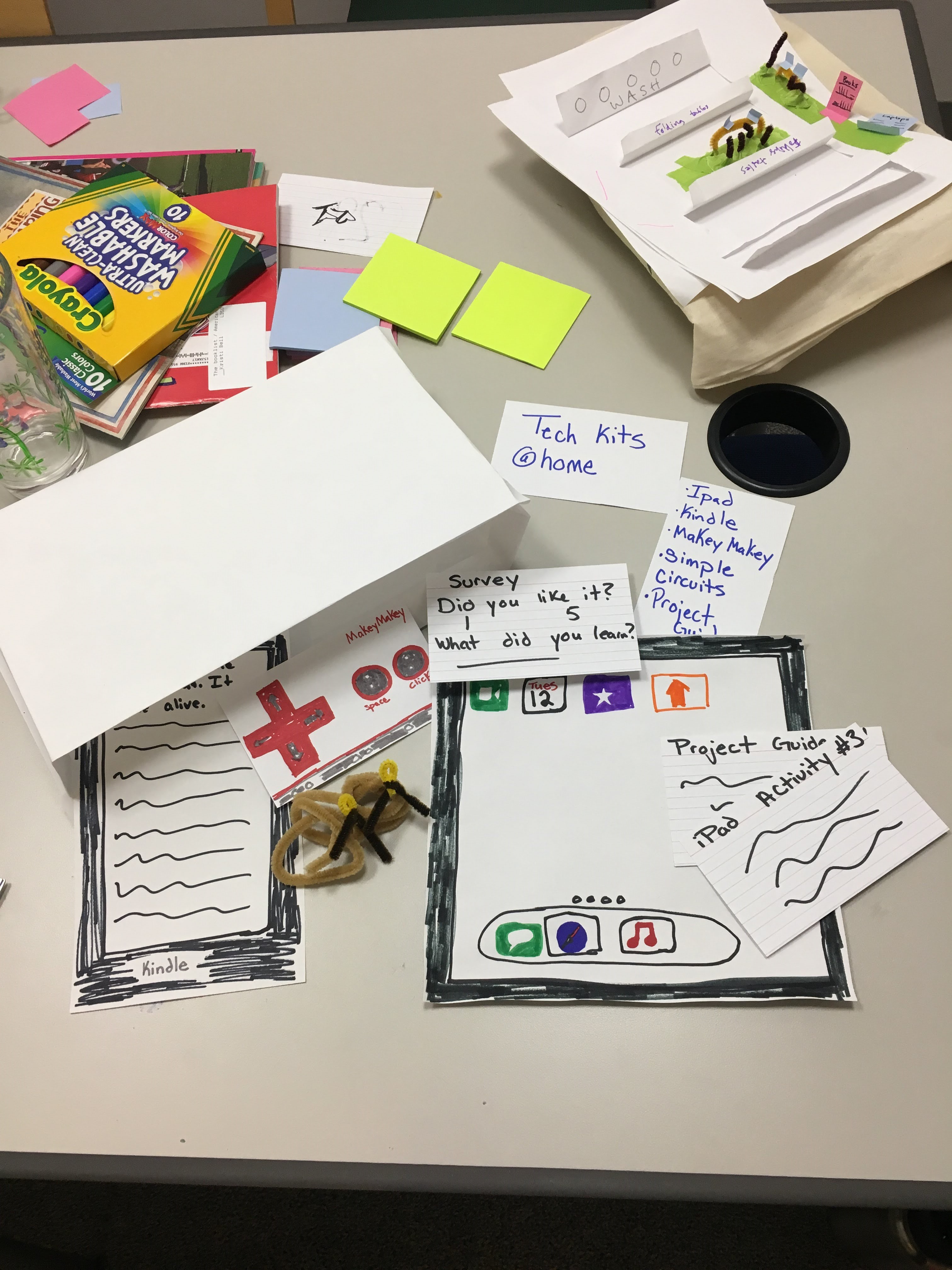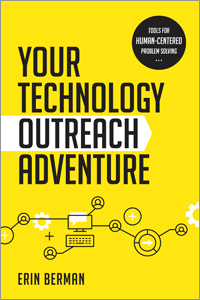Erin Berman talks about taking tech to the streets
In her new book Your Technology Outreach Adventure: Tools for Human-Centered Problem Solving, Erin Berman dives into how to use design thinking skills to undertake technology-based outreach. Based on her team's experiences at San José Public Library, which ranged from videomaking in a skate park to e-readers for seniors, she simplifies the process by showing ways that libraries can try out ideas quickly and learn from missteps. We were delighted to talk with her about her writing process, how to form strong community partnerships, and the concept of "failing successfully."
Congrats on publishing your first book! What were some of the biggest surprises you encountered while working on it?
Thank you! It was a challenging and fun project to work on. One of my biggest surprises was discovering that writing doesn’t always want to happen on your schedule. I’m a planner and had booked out every Friday for writing time. Yet, some Fridays came along and there I would sit peering into the depths of writer’s block. And discovered that if I gave myself a lot of positive affirmations the day before I could enter my writing days ready to go. You have to tell yourself you’ll get down 200 words that day. They don’t have to be good words, but write 200 of them. Once you start, they usually keep  on flowing.
on flowing.
In the first chapter you cite a very interesting study from 2015 that found that Americans’ top three fears are all related to technology in some way. Why do you think that is and how can libraries help people overcome those fears?
Libraries are uniquely poised to assist people in overcoming their technology fears because many of our patrons trust us. Libraries are safe places. This holds true even when we bring our services outside of the physical walls. When confronted with technology a lot of people have many emotions: anxiety, fear of embarrassment, frustration, etc. Use compassion and patience when presenting new technology to patrons. Create an atmosphere of fun where failure is just part of the learning experience, not something to be avoided at all costs.
You point out that there can be quite a bit of overlap between so-called “stakeholders,” as they’ve been traditionally defined, and potential outreach partners in the community. What are some ways that a library can make those connections and get the right people on board and excited?
The best partnerships come when you are both getting needs met. That means libraries have to understand what they are able to offer and what they need. Having conversations from the beginning with potential partners about these expectations means you can explore if it’s a good fit before putting in too many resources. It’s always okay to say no. Look for outreach spots in places where you see a lack of access to library services. Talk about your library to people in the community. Create an elevator pitch and tell people about what your library can do for the community. While you may not develop full partnerships from all of these conversations, you may discover opportunities outside of the traditional.
Can you briefly describe the difference between brainstorming and doing design thinking exercises?
Brainstorming is certainly one component of design thinking. There are a lot of great design thinking exercises that can help us brainstorm. However, design thinking is more than just writing ideas on sticky notes or playing with pipe cleaners. The power of design thinking is in how it reframes our approach to problem solving. Instead of us assuming we know what’s best for our patrons we actually involve them in the design process. This is also why it is often referred to as human-centered design. Through design thinking we go out and speak directly with users, building empathy and  designing based directly on their needs. We can learn how to prototype and pilot ideas, iterating quickly and efficiently.
designing based directly on their needs. We can learn how to prototype and pilot ideas, iterating quickly and efficiently.
What advice can you offer a library that’s interested in a good “starter” project?
The very first step is to find the need. This is done by going out and connecting with your audience. What do they want? Where are the gaps? Next, look for projects that can be implemented with low levels of staff time and money. Technology outreach doesn’t have to be expensive or complicated. Think about what concepts you want to teach and what outcomes you’re trying to achieve. A lot of learning and exploration can happen with some batteries, LEDs, and electrical tape.
You spend some time in the book discussing the concept of “failing successfully.” What are some quick evaluation tips that will help libraries do that?
Create a culture of failure in your library. By that I mean, speak openly and honestly about failures. Dig into them to figure out what happened. What could you do differently next time? Then, iterate and try again. If it still doesn’t work, be okay with stopping. None of us will achieve success in everything we touch. We only fail when we don’t learn. It will probably be uncomfortable. You will likely experience the human condition of emotion that comes with failure. That’s okay. Don’t scold staff for failures, get them to explore them and discuss what lessons were learned. Celebrate your failures, seeing them as the first step in the path towards success!
Learn more at the ALA Store.
